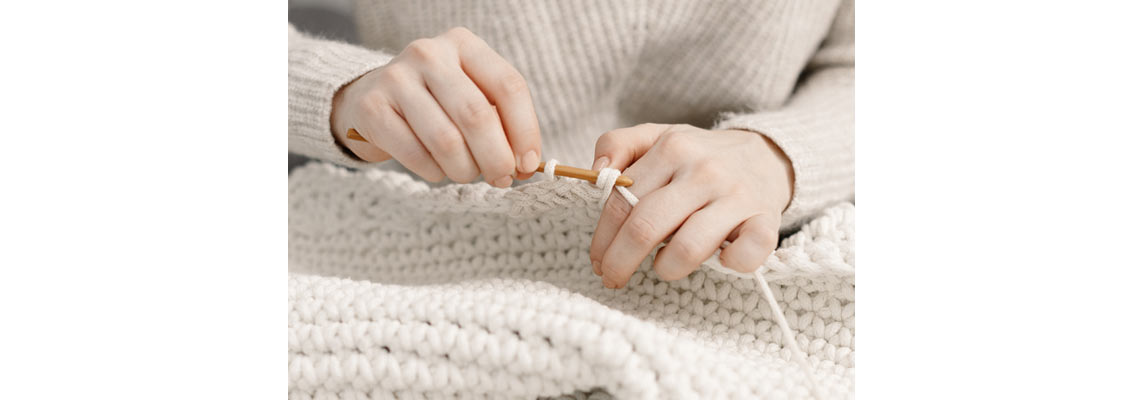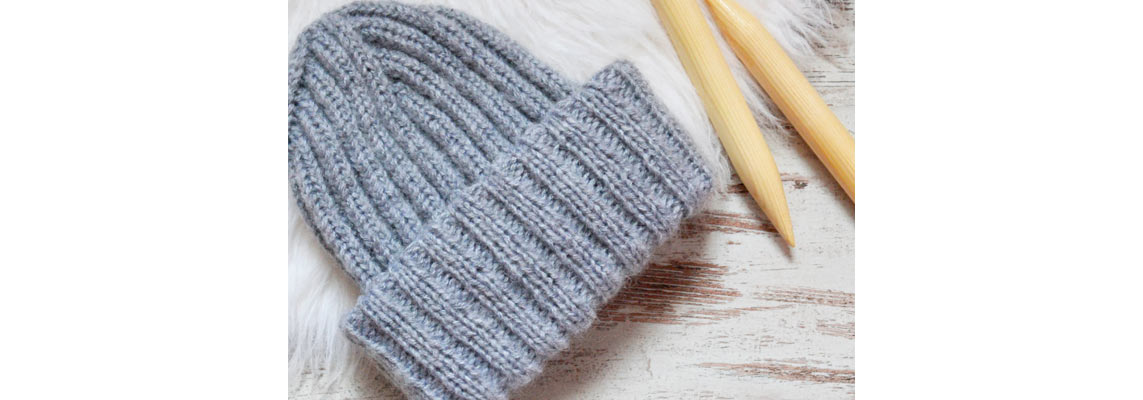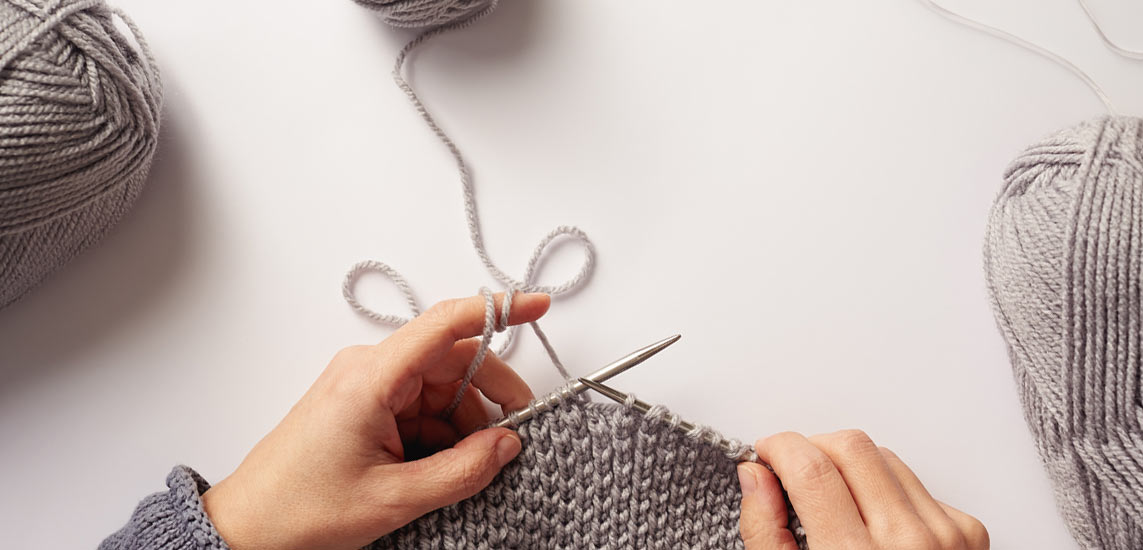Many of us who love to knit or crochet quickly find ourselves surrounded by yarn. Some of the more fanciful among us believe that large yarn collections come about because of the individual skeins we attract – cozy up to one another and make more skeins. Such is the fantasy and chaos that can ensue if we don’t face up to the fact that it needs to be controlled or the very least be managed.
There are multiple ways to tackle this problem. People have devoted chapters and lengthy blogs to the subject. Some of the very generous advocates de-stashing (as it is called) by giving the extra skeins away. Then again, there are those among us (like me!) who believe that there will always be a day when a specific and long-held ball of yarn will be the perfect answer on a rainy day when we are seeking a new project. You just need to hold on to your knitting needles or crochet hooks and the yarn will definitely find its purpose.
We are here, today, to help you make meaningful progress in curating your collection. (Isn’t that a nice way of saying it?) Following is some constructive thinking on the subject.
First, though, a word of wisdom: Before you begin any method of storage, it is important to organize what you own. “Experts” suggest a variety of methods for yarns. Most seem to prefer organizing according to the yarn weight (or gauge). In other words, classify how many you have on hand by the following criteria: lace, fingering/sock, sport, dk, worsted, chunky, etc. There is a slight difference between sport and dk, so you may be tempted to put them together, but there is a definite difference in gauge, so be sure to keep original labels on, if possible. If not, make your own. It is essential information. If you cannot differentiate, work on a gauge swatch for the right count of stitches. Gauge is an essential tool for planning all yarn craft projects. This will help you calculate for your knitting or crochet patterns.
This is also a good way to determine what weight you most like to use – since you will probably have more of that gauge in your yarn stash. It’s funny how this simple act can shine a lot of light on your preferences as a fiber artist. You will notice it with color, as well.

Once that is accomplished and you have sorted it out, it’s time to decide on an actual storage choice. Store any and all yarn that is not in use in a dry and light-protected environment. Mold is a natural enemy, as is direct sunlight. Obviously, pests such as moths, carpet beetles, mice and various insects must be protected against. Even small pets, as much as we might love them, can pose a threat to delicate and/or expensive yarns. For that reason, I like to keep all yarn containers on shelves or high in a dry closet, with cedar lined being ideal. After the place is decided, you have to decide on actual container options. Here’s an overview of a few options:
The Beautiful Basket Solution – Pretty but Useless
I sometimes use this option myself and, while I like the look of a good basket – especially vintage ones – I’m here to tell you it is not a great solution. The reasons are many but my top one is that it is not protected. Even if you have a lid for that basket – a smart moth can find its way in faster than you can blink and once eggs are laid, your pure wool yarns are toast. Using a basket is good only for keeping a current project close at hand. It makes a pretty picture, but for actual storage, it’s one of those ideas that looks good but is worthless in the long run. The other problem is that random balls of yarn tend to co-mingle and before you know it, they are attaching themselves to their neighbor and even indulging in some felting fraternization.
If you do not want a store-bought basket, simply use up your stash to crochet a sturdy basket. There are options to stiffen up the yarn to stay in shape. Crochet a basketweave stitch pattern for a beautiful effect. Refer to our previous guide on how to crochet basket weave pattern. While the blog talks about a blanket, you can customize it for a blanket.
The Open Cubby Solution – Maybe it works for stores, but it’s not for homes. Again, the look is attractive, but this does not work as far as open cubbies are concerned. Dust, infestation by unwelcome insects, too much exposure, tumbling skeins -these are just a few potential pitfalls. This may be ok for display in retail settings, but even that has to be covered at the end of the day, re-arranged and weeded out due to handling. (Owning a yarn store or managing yarn inventory is not for the faint of heart, believe me.)

The Best Solution – Unglamorous but True: Airtight, Stackable Boxes with sealed lids are the best way to go. It’s the only way you can be assured that your valuable and well-admired yarn will remain safe from the hazards waiting to prey on your beautiful stash, including creepy crawly insects, rodents, dirt & mold, direct sunlight, darling pets and tangled skeins.
If you are smart enough to label each box and they are clear, you will also be able to locate exactly what you need, when you need it.
Another word to the wise: Although it is tempting to pick up clean used boxes at a garage or barn sale, please consider buying new ones. They are available at low-cost retailers such as Walmart, Target or Amazon. It is essential that the boxes are air-tight and have a proper seal to prevent any problems. In fact, the super careful among us – and there is a goodly number – go the extra mile and encase yarns in airtight, sealable plastic bags and place those in their lovely new boxes. After all, your yarns are artist’s materials and are worthy of respect as is the artist who collected them!
If you still find the yarn unmanageable, there are several things you can do. You can refer to our guide on easy knitting projects with stash yarn to get some ideas.
Make a Hat or Socks - Hats and socks are wonderful projects whether you knit or crochet. They are not just amazing for personal use but make beautiful gifts. You can also make them for charity purposes and gifts to the needy. Knitting a hat or socks works with either a set of double-pointed needles or circular needles with any yarn weight and shade. Quickly done in no time, they are the ideal projects to sort out your stash.
Make a Rug/ Dishcloth/ Blanket/ Scarf - Similar to hats and socks, a rug, dishcloth or blanket is also ideal for multiple uses. From decorating your home to giving it to charity, the project will serve a lot of crafting needs. You can use up your stash and add to the size of the project. A rug with different yarn weights will have a beautiful look and feel. Dishcloths are good knitting practice that results in practical projects that serve you well.
With this, you have the opportunity to deal with your yarn stash. KnitPro assists with all your knitting and crocheting needs. Explore knitting needles and crochet hooks in wood, bamboo, metal, stainless steel and more. The yarn winding and dispensing accessories are of the greatest help when you are dealing with stash. You can unwind yarn and inspect mistakes and knots getting your yarn ready for any knitting or crochet project.












